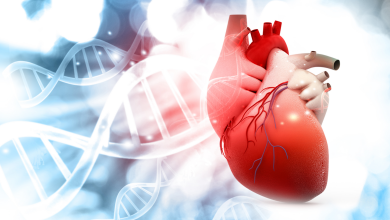
WHO: No evidence of Covid-19 transmission from surface contact
الصحة العالمية: لا أدلّة على انتقال «كوفيد – 19» من ملامسة الأسطح
DPA
The World Health Organization (WHO) said on Saturday that it has not yet been proven that the new COV-19 virus can be transmitted to people by contacting surfaces on which the virus is found, such as door handles and keyboards.
However, it is recommended that things should be sterilized in accordance with WHO guidelines, and the guidelines point to a study that has shown that the virus can remain on the outside of the “medical face mask” for up to seven days.
However, WHO also stated that studies on the viability of the virus should be viewed with some doubt, as such studies were conducted in laboratories that had little to do with real-world conditions.
In the study referred to, the virus remained on stainless steel and plastic for four days, for two days on glass, and one day on fabric and wood, another study showed that it can stay for four hours on copper, 24 hours on cardboard, and 72 hours on plastic and stainless steel.
Although there are no cases so far of transmitting the virus to people from a surface, such transmission cannot be ruled out due to the behaviour of other known CORONA viruses, and therefore the importance of sterilizing surfaces and things such as basins, toilets, electrical appliances and handles, according to WHO.
However, WHO also advised against spraying disinfectants on a large scale, both in doors and outside, as many Asian countries have done.
WHO also warned against spraying people with disinfectants, especially since this does not prevent the transmission of the virus from one infected person to another.
دب ا
ذكرت منظمة الصحة العالمية أمس السبت، أنه لم يثبت حتى الآن إمكانية انتقال فيروس كورونا المستجد «كوفيد – 19»، إلى الأشخاص من خلال ملامسة الأسطح التي يوجد عليها الفيروس، مثل مقابض الأبواب ولوحات المفاتيح.
ومع ذلك، من المستحسن ضرورة تعقيم الأشياء وفقاً للمبادئ التوجيهية الصادرة عن المنظمة الأممية، وتشير المبادئ التوجيهية إلى دراسة أظهرت أن الفيروس يمكن أن يظل باقياً على السطح الخارجي للقناع الواقي «الكمامة الطبية» لمدة تصل إلى سبعة أيام.
لكن منظمة الصحة العالمية ذكرت أيضاً، أنه ينبغي النظر إلى الدراسات المتعلقة بقدرة الفيروس على البقاء بشيء من الشك، حيث إن مثل هذه الدراسات أجريت في مختبرات لا علاقة لها كثيراً بظروف العالم الواقعي.
وفي الدراسة المشار إليها، بقي الفيروس على الصلب المقاوم للصدأ والبلاستيك لمدة أربعة أيام، ولمدة يومين على الزجاج، ويوم واحد على النسيج والخشب، وأظهرت دراسة أخرى أنه يمكن أن يبقى لمدة أربع ساعات على النحاس، و24 ساعة على الورق المقوى، و72 ساعة على البلاستيك والصلب المقاوم للصدأ.
وبالرغم من أنه لا توجد أي حالات حتى الآن تدل على انتقال الفيروس لأشخاص من سطح ما، فإنه لا يمكن استبعاد مثل هذا الانتقال نظراً لسلوك فيروسات «كورونا» أخرى معروفة، ومن ثم تنبع أهمية تعقيم الأسطح وأشياء مثل الأحواض والمراحيض والأجهزة الكهربائية والمقابض، حسب المنظمة.
لكن المنظمة نصحت أيضاً بعدم رشّ المطهّرات على نطاق واسع، سواء في داخل المنازل أو خارجها، كما فعل العديد من الدول الآسيوية.
كما حذّرت المنظمة أيضاً من رشّ الأشخاص بالمطهّرات، خاصة أن ذلك لا يمنع انتقال الفيروس من شخص مصاب لآخر.



